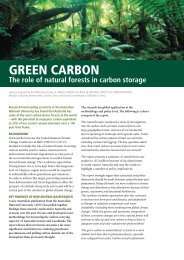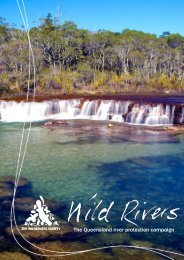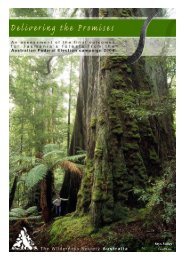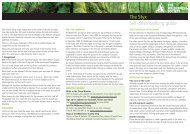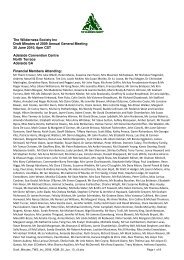Untitled
Untitled
Untitled
- No tags were found...
Create successful ePaper yourself
Turn your PDF publications into a flip-book with our unique Google optimized e-Paper software.
to Classes 4 and 5, with light scorching or no scorching of the crown and some or no fireimpact to the understorey.On a visit to an area known as the Cumberland Reserve (a mix of mature, old growth forestand cool temperate and pure rainforest in the northern section of the Armstrongcatchment) the author noted varied fire intensities in varied vegetation communities. Thisreserve adjoins the O’Shannassy catchment and shares similar vegetation. The youngerstands of forest, south of the Cumberland Reserve, were severely fire affected (DSE 2009).As the fire burnt into the Cumberland Reserve the crowns of numerous mature and oldtrees were severely scorched. As the fire moved into areas of cool temperate mixedrainforest the fire’s intensity decreased. The crowns of numerous tall mature and old treessustained little or no scorching. An example is featured in Figure 5.24.Figure 5.24 Fire affected forest in theCumberland Reserve, Yarra RangesNational Park.(Photo: Chris Taylor, August 2009)Overall, this phenomenon appears congruent with the results detailed in Mackey et al(2002). In their discussion of environmental controls on vegetation structure and fireregimes in the Central Highlands of Victoria the authors explain:“Old trees have thicker bark and are more fire-resistant than youngerstems. Therefore, more trees are likely to survive in old growth standsfollowing an unplanned (wild) fire, leading to a multi-aged standstructure. This is consistent with dendrochronological studies by Banks,who found that several large Mountain Ash trees he examined had36






